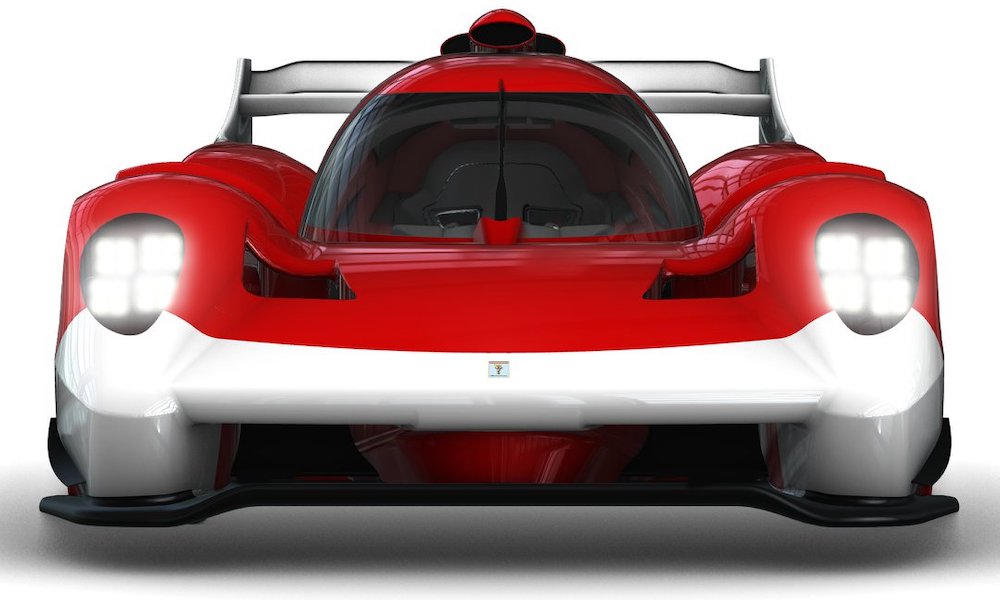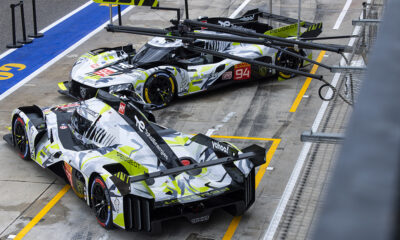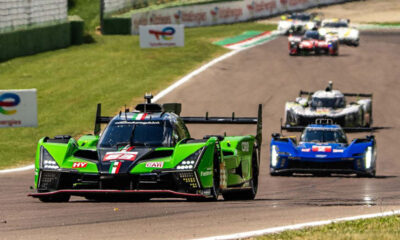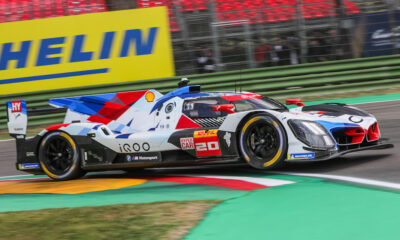
Photo: Scuderia Cameron Glickenhaus
Scuderia Cameron Glickenhaus does not plan to make further adjustments to its Le Mans Hypercar engine philosophy despite a recent rule change to reduce the maximum power level in the formula.
The American automaker originally intended to supply its SCG 007 hypercar with a twin-turbo V6 Alfa Romeo unit capable of 670 horsepower, but it was forced to abandon this plan when the ICE power ceiling was raised from 680 hp to 785 hp last year.
SCG then adopted a more powerful 3.8-liter twin-turbo V8 developed by rally engineering firm Pipo Moteurs that is capable of producing 870 hp for the non-hybrid machine.
However, the FIA Endurance Commission recently announced that LMH power levels would be lowered to a maximum of 670 hp, putting the class in line with the global LMDh platform that is set to arrive on top-level sports car grids in 2022.
SCG founder Jim Glickenhaus told Sportscar365 that this regulation change effectively meant his company could have used the original Alfa Romeo engine all along.
Despite this, he reckons SCG will be able to stick with the more powerful Pipo Moteurs package.
“It was a very disruptive thing for us,” said Glickenhaus. “We had to throw the Alfa Romeo deal in the garbage, and it cost us money and time, but we regrouped with Pipo Moteurs and we were on target.
“Then, the desire for convergence became so strong between the ACO and IMSA that they had to come to some sort of accommodation.
“IMSA came up with a large set of rules and basically it necessitated us agreeing to reduce the overall horsepower and the overall weight.
“We had spent a lot of money on Alfa Romeo and then spent a lot of money developing the [Pipo Moteurs] engine that could make 870 hp for 30 hours.
“And now, we don’t need as sophisticated an engine. But in terms of our engine, it’s going to be the same. There’s nothing different in the engine that we’re going to do; there’s no large change.
“And the weight [reduction from 1100 kg to 1030 kg] was never an issue because our car is a 900 kg car, so that doesn’t matter.”
Glickenhaus explained that the production origin of the Alfa Romeo twin-turbo V6 made it unsuitable for achieving the now-discarded 785 hp power limit, which was at the top end of a 750 hp approximation announced at Le Mans last June.
“Absolutely we could have stuck with Alfa, and we would have stuck with Alfa,” said Glickenhaus.
“It would have been a pretty amazing thing to bring Alfa Romeo back to Le Mans and we would have loved for that to happen.
“But once we went to having to make 870 hp there was no way we could make that – even with a hybrid – from the Alfa Romeo engine. It’s a wonderful engine, but it’s not a race engine.
“The Pipo engine is a much more sophisticated engine, but equally it’s not a road engine. They’re different things.”
Fellow LMH constructor ByKolles Racing faced a similar engine problem with its Gibson V8 not being powerful enough to reach the higher 786 hp figure, but the team was able to continue with its current LMP1 supplier once the goal was brought back down to 670 hp.
LMH Platform Could be an LMDh Alternative
Glickenhaus has proposed that the Pipo Moteurs engine could be an option for LMDh car brands.
He also suggested that SCG could offer its 007 LMH platform as a base for brands that are seeking more car design flexibility than what is afforded by LMDh.
Manufacturers entering LMDh must pick from one of four LMP2 origin chassis on which to develop their hybrid-powered cars.
“We are in discussions with two major manufacturers who are evaluating our LMH platform and they could put their own body and engine in it,” said Glickenhaus.
“It might be a much better vehicle than an LMDh. The other problem is that if you’re a major manufacturer and you build a car on an LMDh, you’re not making the choice.
“How is that for your advertising? Is a manufacturer like Ferrari, which has said that it’s interested in LMDh but wants to make its own chassis, really going to do such a thing? I don’t think so.”






















